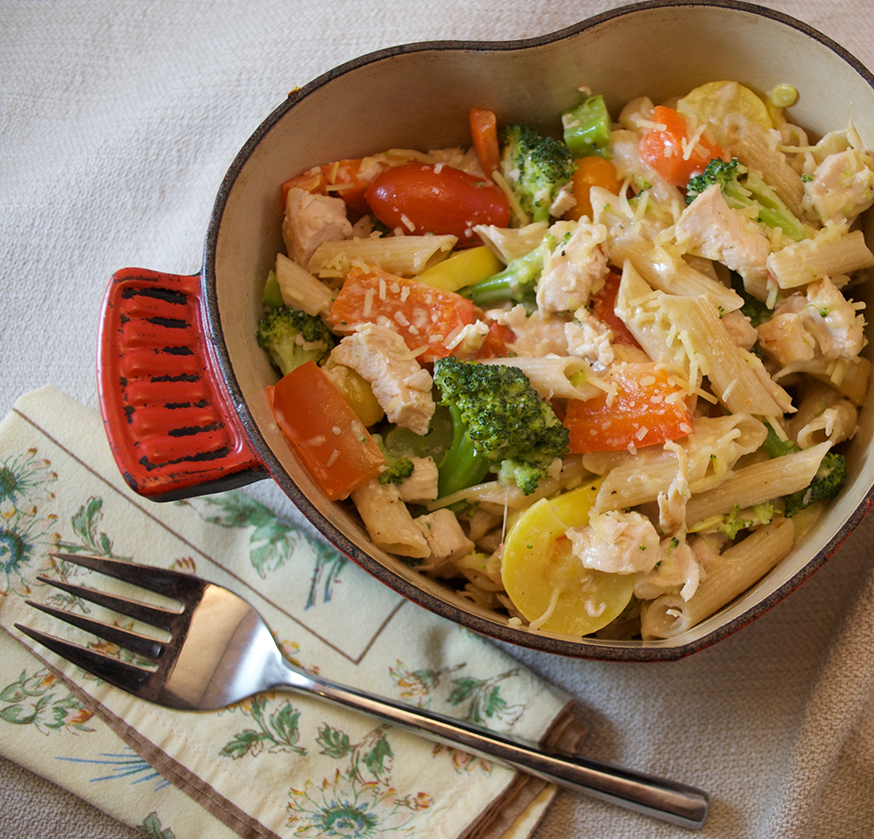What makes a recipe one you come back to again and again? For me, it’s important that my people want to eat it again and again. And happily. No complaints! It needs to be delicious, flexible and convenient. I should be able to change it up on whim or necessity, depending on what vegetables are in the house. Sometimes it’s the celery starting to look a little weak around the knees and I have no broccoli. It’s nice to be able to listen to what’s calling out to you from inside your fridge and do something about it!
My Go-To Chicken Pasta has come to the rescue numerous times. If I find unexpected guests in the house around dinner time or at lunch on the weekend, this is the meal they are going to get. It’s made of things you almost always have on hand and, wait for it… it’s a one pot meal because you cook your vegetables and meat in the same water as your pasta! That’s as go-to as it’s going to get!! Here is a recipe you can make your own, depending on vegetables at the market or in your fridge. The vegetable that takes the longest to cook should go in the post first.
It’s super easy to have GoodHeart Chicken on hand in your refrigerator, hopefully you have some fresh vegetables, there’s always some shape of pasta in the cupboard, go back to the fridge for the mayo, and shredded parmesan cheese is one of those nice hard cheeses that lasts and lasts.
An important note which will make everything so much easier: know about how long each vegetable takes to cook BEFORE you start. The harder the vegetable, the longer the cook time. Also, the bigger and thicker the pieces, the longer they will take.

